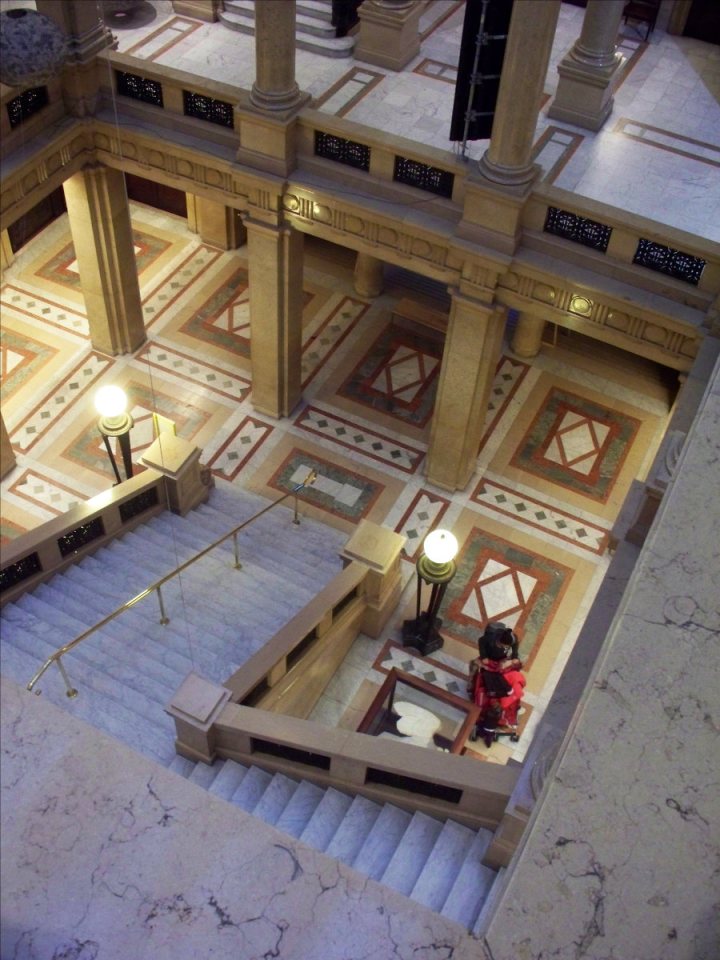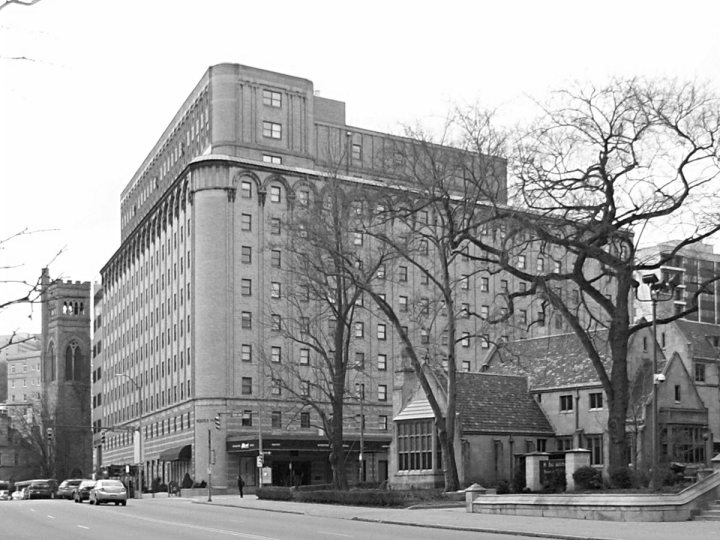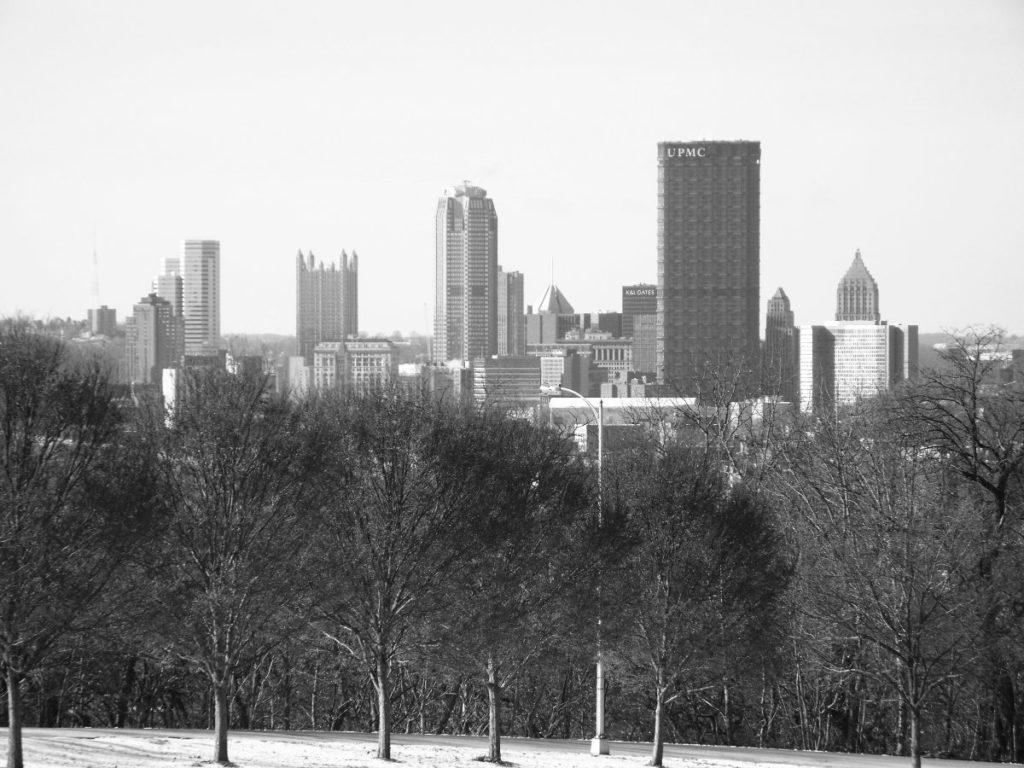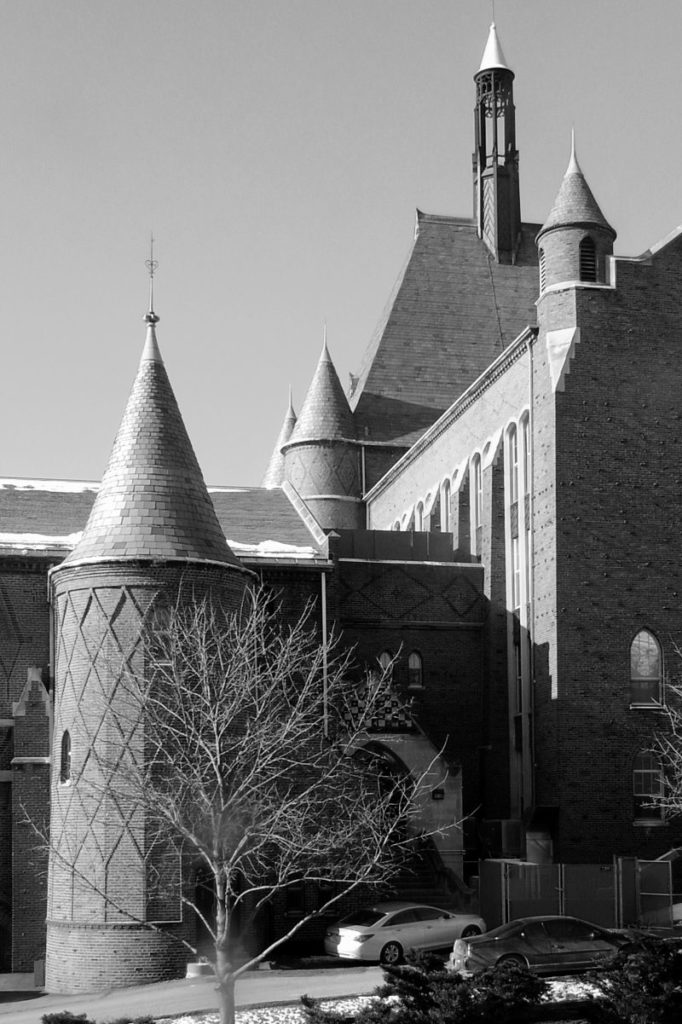Looking up Bellefield Avenue during this afternoon’s snowstorm.
-
Oakland in the Snow
-
Grand Staircase, Carnegie Museum
The Grand Staircase is meant to be the main focal point of the museum, but the unsympathetic addition of the Scaife Galleries, with a new main entrance, makes the staircase something of a backwater. It’s still grand, however, even when overrun by the International. The murals are by John White Alexander.
-
Webster Hall
-
View of Oakland from St. Michael’s Cemetery
-
Oakland Panorama

A panoramic view of the skyline of Oakland from Schenley Park. Few Pittsburghers realize what an unusual phenomenon Oakland is: a second city within the city, and a city of the mind—a city whose towers are devoted to learning and research.
-
View from Schenley Park
-
Turrets at Central Catholic
-
Entrance to Bayard Manor
-
Cathedral of Learning from Three Viewpoints
The Cathedral of Learning from three different angles. Pittsburgh is a bit unusual in having one of its tallest skyscrapers outside the main skyscraper district. Currently this is our seventh-tallest building (at 535 feet), but it will be bumped down to eighth-tallest when the new Tower at PNC Plaza (554 feet tall) is finished.
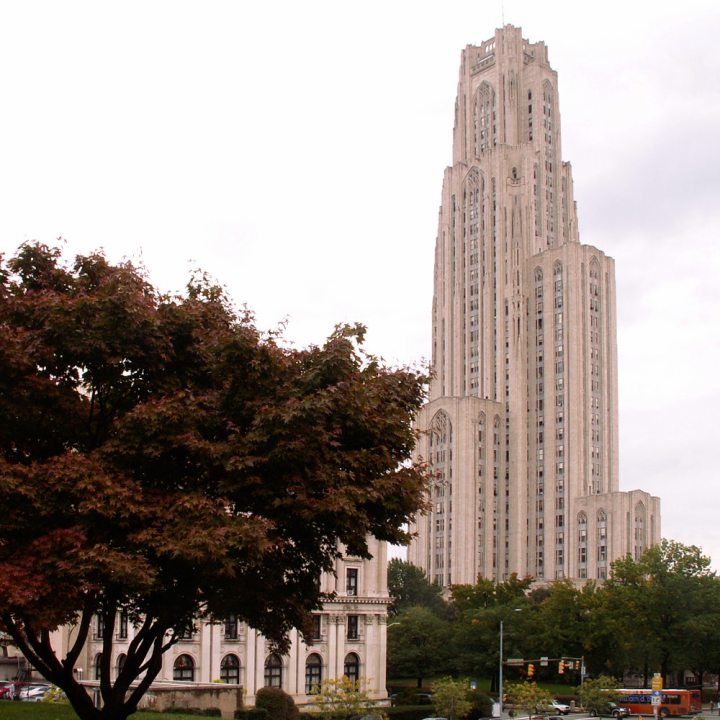

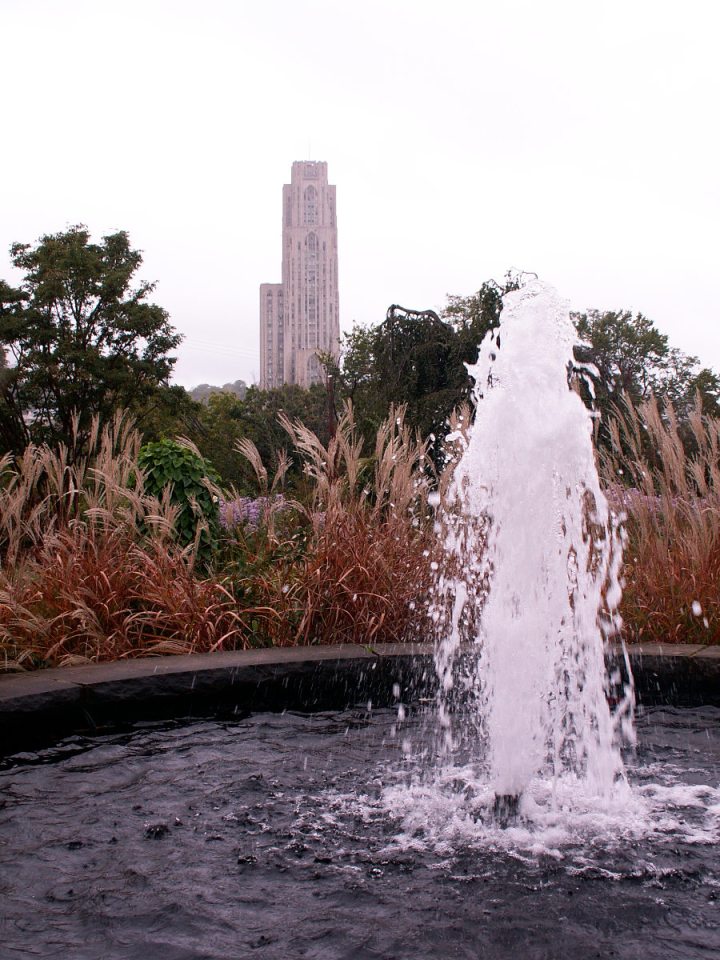
-
Soldiers and Sailors Hall
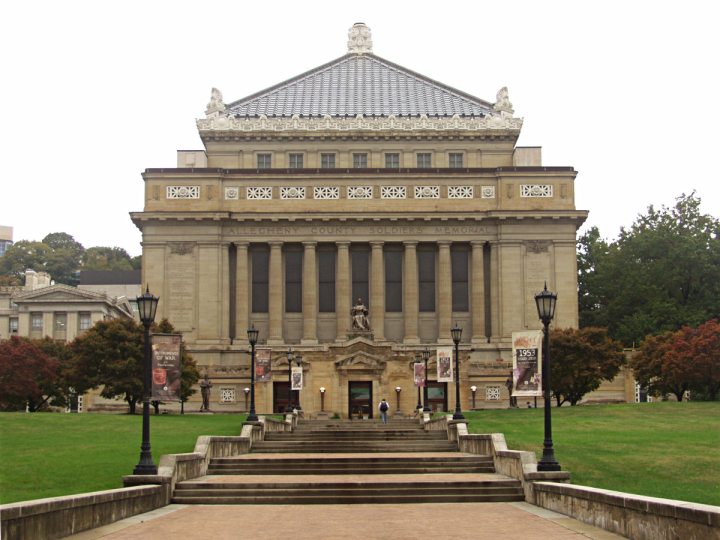
Henry Hornbostel designed this memorial, which originally honored Civil War veterans from Allegheny County. It now honors veterans of all wars. This is one of at least half a dozen buildings in Pittsburgh inspired by the Mausoleum at Halicarnassus, and of all of them this one is the closest in scale to the original.
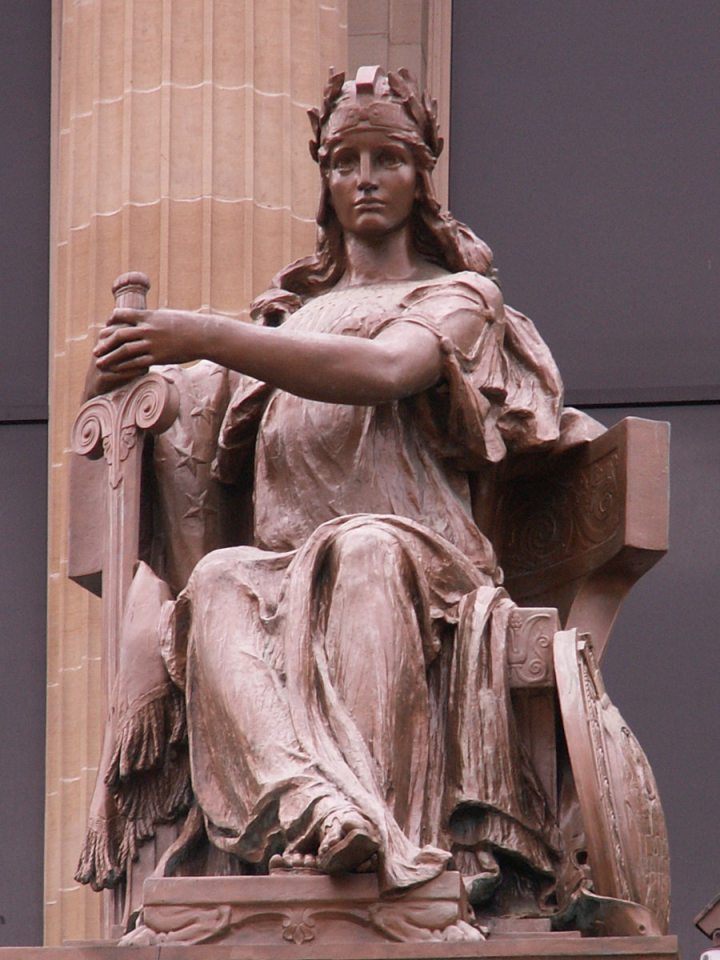
America, by Charles Keck, keeps watch over the main entrance.

A soldier: Parade Rest by Frederick Hibbard.
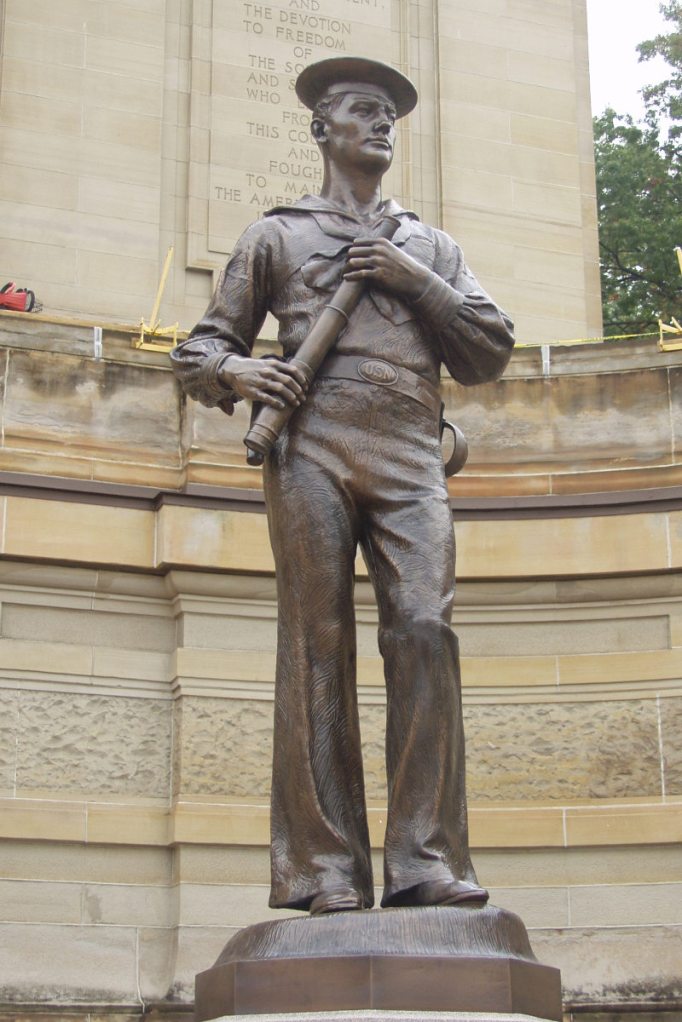
A sailor: Lookout, also by Frederick Hibbard.
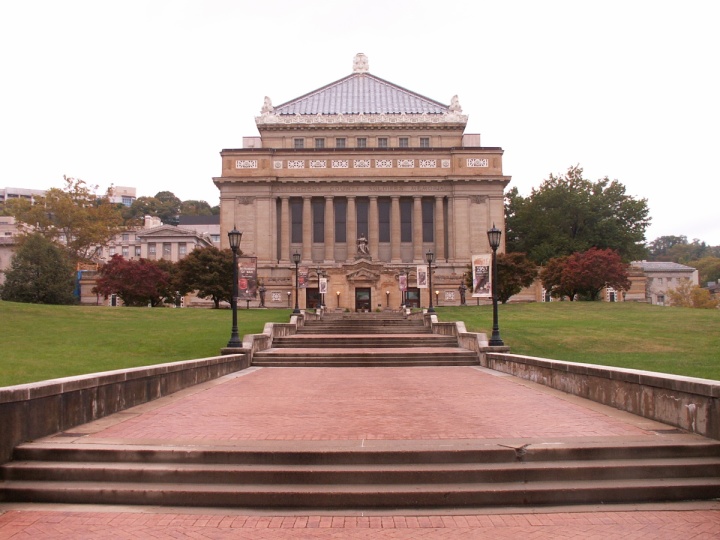
Supposedly Mr. Hornbostel very much wanted the front of the building to face a long vista from Fifth Avenue, but the clients were very insistent that the front must face Bigelow Boulevard. Hornbostel finally had to agree. It was not until construction was considerably advanced on the building, which is quite square, that the clients discovered Hornbostel had built the thing his way after all.
Among the building’s many treasures is a large auditorium that seats 2500—about the same capacity as Heinz Hall. The Pittsburgh Symphony made some early ultra-hi-fi recordings in here, because William Steinberg thought the acoustics were far superior to what he heard in Syria Mosque across the street, which at that time was the usual home of the Pittsburgh Symphony.


